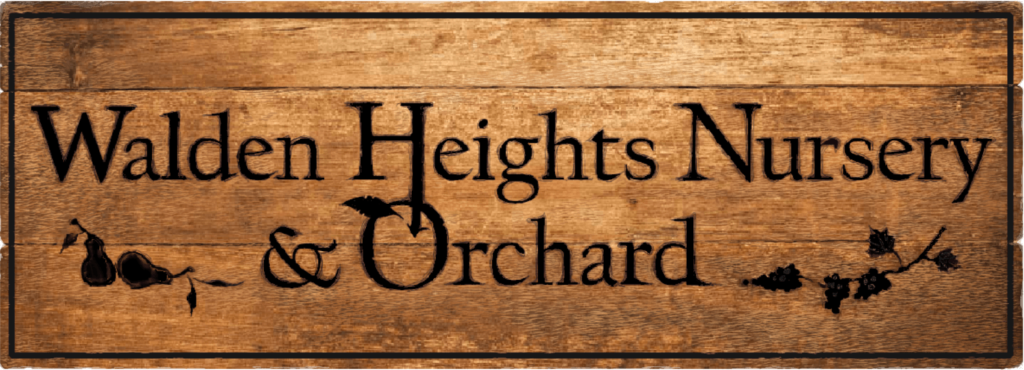Do you see many orchards around here choosing to irrigate?
Irrigation of course, can mean a lot of things. What is being asked here I think is whether or not a constructed system is put in place to deliver the water.
Irrigation, as in drip-line, is used for high density dwarf systems. In these arrangements, whether they cultivate or not, it is usually recommended due to the meager root system. Trees using size reduction rootstocks (dwarf), require a good deal more pampering with respect to water. Traditionally this was delivered through open canals, overhead sprinklers, etc. Modern techniques include soil drenching through plastic emitters in miles of plastic tubing. It is an absolute must in many of the dryer regions of the northwest and California, but is popular throughout the country.
In the wet northeast, with standard trees it is unnecessary. Trees obtaining their natural large stature will have roots mining for water over a very large area. Roots can extend meters down and in circumference at least twice the distance of the canopy. This means resilience during dry spells, and buffering against extreme cold.
Irrigation can confine roots to the pampered area in many cases. If the rooting mass is confined to shallow, smaller areas due to trickle irrigating, later stresses like cold or drought can lead to mortality. The mechanism here (and backed up with numerous studies) is the tendency for roots to amass in areas of ideal culture. That is, where it has good nutrition and soil moisture content. While this is good for the tree in general, it does limit the yardage the roots will occupy. This is pronounced if the outlying area is dry. Roots do not really grow toward ideal soil, they just don’t proliferate where it is poor. An example of the possible danger is when irrigation is confined to a shallow depth by continuous light applications. Roots will be largely clustered in this same shallow zone. In colder areas, this can lead to root damage or death . It can also have such consequences in warmer, dryer areas if there is a pause in irrigating (ie- broken lines or power outages).
Some alternatives include:
- Increase the organic matter in your soil. Fully composted materials are advised if you are incorporating it directly.
- Surface application of organic materials. This is the place to put the coarser materials, and higher carbon detritus. If it is a continuous application, we call it mulch. Bark, hay, straw, leaves and wood chips all fit in this category.
- A 5 gallon pail of water really isn’t all that heavy. At 8 pounds a gallon, that’s 40. One in each hand (filled 4/5 so it doesn’t spill on you) is 64 pounds. That’s all you need to deal with during the occasional drought for your young tree.
- Grow standard trees. These are those with a natural seedling rootstock that will let a tree grow to its full size. They can be pruned to be less tall and still have a large canopy and extensive root system. Think of this route as raising self sufficient children.
We suggest watering during that planting year, especially during dry spells, for better growth. Sandy soils of course will need more attention than heavier ones. Mulching is a great way to conserve that moisture ( keeping it away from the trunk) and do it initially after the soil is wet.
Here is something to consider : The US Geological Survey posts on their site that a mature oak can transpire 40,000 gallons of water in a year. That’s one tree. Now, an apple tree is a whole lot smaller than an oak, so in the interest of fair play, let’s reduce that figure 40 times. That leaves us with 1000 gallons for a mature apple. However, if the tree is transpiring that much as water, it must also be absorbing more to use in metabolic processes. Then there is the issue of delivery versus root uptake. That is, the soil must contain more than this amount of water to begin with. Irrigation through precipitation or human intervention must exceed the volume absorbed by the tree. To make an impact, it would seem a very large volume would have to be delivered indeed.
In conclusion, a plant with a small root system will require a good deal more attention as regards water. This lines up nicely, since a small root system stands the chance of benefitting from the amount of water we are likely to be able to deliver. This is why farms tend to irrigate their high end vegetable plots but not irrigate hay fields and cider orchards.
Water is the single greatest and most overlooked of fertilizers for plants. Time and money are the single greatest commodities of the human being. With proper decisions, nature can do a good deal of the work for us.

